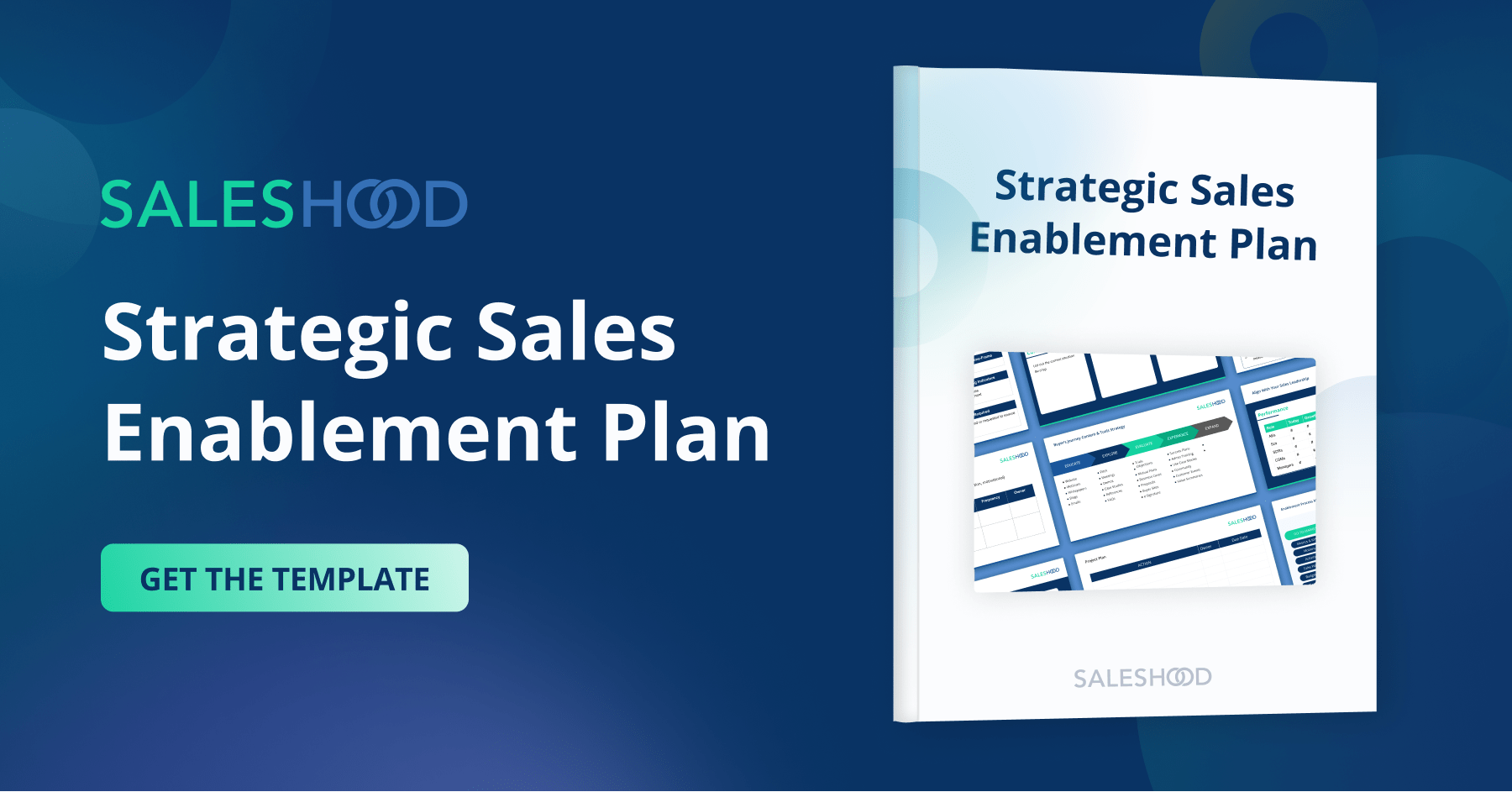Over the years, my teams and I have trained and certified tens of thousands of salespeople. This includes the six years I spent as Senior VP of Sales Productivity at Salesforce, where we became the envy of almost every technology company for our ability to successfully onboard massive amounts of new hires, while also growing rapidly as an organization.
Still, the fact of the matter is that most companies don’t have the resources of Salesforce. They still need to effectively onboard and train new hires, but must accomplish it with less. I’ve been on a quest to help smaller organizations get the same results and believe any company can use the five-step secret sauce I’ll share with you here to dramatically improve time to first deal and quota attainment for their salespeople.
Step 1: Build a rich library of crowdsourced content.
Don’t wait until bootcamp to get your new hires introduced to deal win stories, executive interviews, and top customer presentations. Crowdsource the stories and pitches and make them available to your teams the moment after they sign your offer letter.
David Rudnitsky and Jim Steele followed this readiness playbook when they started working for InsideSales. In their first couple weeks, new hires are guided through over 20 hours of video prework and team exercises rich with deal wins, customer stories, executive interviews, product demonstrations, top-performer territory plans, and strategic account plans. The payoff with their enterprise sales professionals and go-to-market was huge. Every seller closed a deal in their first 30 days and generated tens of millions of self-sourced pipeline.
Step 2: Curate mentorship and call shadowing.
Create a schedule for new hires to call shadow as many peers as possible. Put them on a schedule and hold them accountable. Have them document the calls and share what they learn. Their observations are very telling about what future coaching is required.
Then, after they’ve sat through their quota of shadow calls, they themselves should be shadowed as they graduate to leading their own customer calls. Focus on the fundamentals and make sure they are being curious and conducting discovery and relationship building the right way.
Daryl Spreiter, Senior Director of Sales Enablement at Salesforce.org, instituted an onboarding cadence rich with mentorship and call shadowing. Each new salesperson is asked to sit in on at least five sales calls and document what they observed and learned. They reported back about who they call shadowed, which customer was called, what the purpose of the call was, and the lessons learned from the call. Being disciplined about investing in people enabled Salesforce.org to hire more sales executives while exceeding revenue goals in 2016.
Step 3: Build a “stand and deliver” culture.
Many companies put emphasis on a single “stand and deliver” certification event. That doesn’t work well. Follow what the best companies do and create micro certifications. Have salespeople “stand and deliver” simulated role plays for elevator pitches, customer storytelling, objection handling, and product demonstrations. Have the final “stand and deliver” certification be a customer presentation based on a real customer deal.
Sequence the “stand and deliver” presentations by theme and week and repeat them multiple times. Start with an elevator pitch. Move to a customer story. Do the product demonstration. Close with a real customer presentation. Rinse and repeat until confidence and competence are high.
Apttus improved its time to first deal for all its sales professionals by more than 50% when Aaron Farley, Global Head of Enablement, instituted a culture of “stand and deliver” from day one of every new senior hire’s onboarding journey. Sales execs record a two-minute elevator pitch and customer story. The executive team invests the time to watch the video presentations and give feedback before new employees show up to bootcamp. After speaking with their executives, they shared with me how insightful it is for them to watch their new hires as they stand and deliver their elevator pitch and customer story. It’s a scalable way to gain valuable insight about what coaching a new hire needs early on in his or her career.
Step 4: Integrate first-line managers with onboarding journeys.
An important step that is often overlooked is including first-line managers in the process. Send them reports and updates on progress. Have them review pitches and presentations as they happen. Hold them accountable for coaching their own teams.
Telogis, a B2B platform for connection intelligence, does an excellent job making its first-line sales managers active members of onboarding. Reports are sent weekly outlining the progress and accomplishments of Telogis’ sellers. The company has realized a 300% improvement in time to first deal by embracing a structured approach to onboarding with first-line manager engagement and accountability. The onboarding progress reports are invaluable for managers to augment their regular one-on-one coaching sessions.
Step 5: Extend the onboarding period.
The goal with onboarding should be to help teams put points on the board as quickly as possible while reducing the need for long on-site bootcamps. Those are expensive and aren’t conducive for quality learning and retention.
Start thinking about onboarding as a 30-day virtual journey with prework, mentorship, and milestones versus a one-week intensive boot camp experience.
You’re a lot closer than you think. Crowdsource deal wins. Crowdsource customer stories. Crowdsource top-performer territory plans, emails templates, and account plans. Collate the top customer presentations from your top performers. Organize the content and make it available to your teams. Have a vision in mind and create a phased approach to content development that delivers value to new hires and the bottom line faster.



